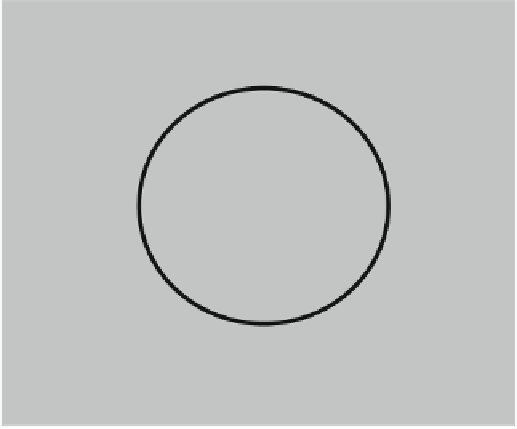Biomedical Engineering Reference
In-Depth Information
A
B
peristaltic
micropumps
Fig. 1.49
The schematic view of a rotary mixer
Mixing of fluids is of paramount importance in micro- and nanofluidics. A basic
physical mechanism for mixing is the Taylor dispersion, which is based on the
dispersion of a tracer along the stationary flow in a small-dimension microchannel
or a capillary. If we consider that the concentration C is homogenous along the
transverse direction, the equation for the tracer spot spreading is
DC
=
Dt
D
@C=@t
C
U@C=@x
D
D
eff
C;
(1.51)
where the flow direction is denoted by x, and the effective diffusion coefficient is
given by
D
eff
D
DŒ1
C
ˇ.
Uh
=D/
2
;
(1.52)
where h is the channel height and ˇ is a parameter dependent on the cross-sectional
shape of the microchannel. Expression (
1.52
) tells us that when Peclet is high, the
diffusion coefficient is increasing with the square of the velocity of the fluid. This
effect is called Taylor diffusion and, based on it, a rotary mixer device as that in
Fig.
1.49
can be designed.
The peristaltic pumps in Fig.
1.49
are driving the flow around the ring. The two
fluids A and B are mixed after few rotations and, due to the Taylor diffusion, this
occurs in tens of milliseconds. In this way, such a rotary mixer can extract DNA
from a single cell and amplify it. Another way of rapid mixing is flow focusing,
where a central fluid stream is narrowed using a constriction. The mixing in this
case is performed in tens of s. There are various ways of driving or manipulating
fluids via electrokinetics effects, such as electroosmosis and electrophoresis. We
will not detail further the theory of microfluidics since this is beyond the scope













Search WWH ::

Custom Search